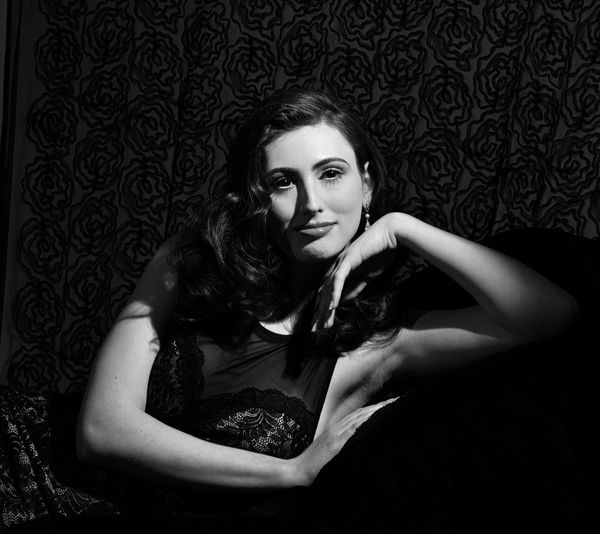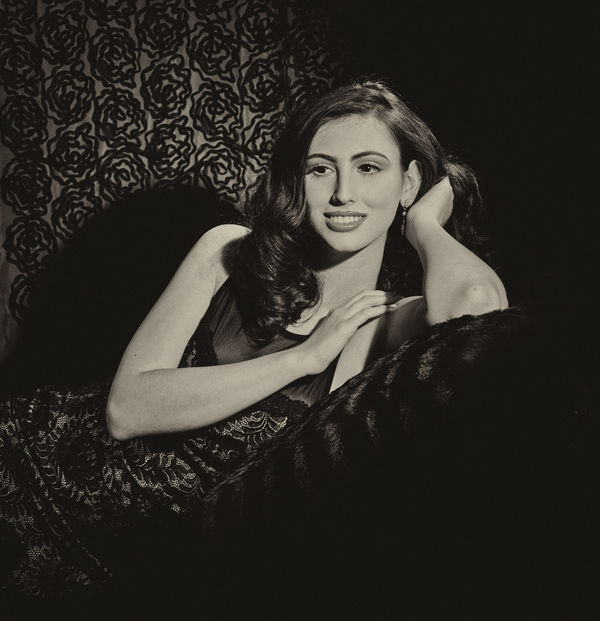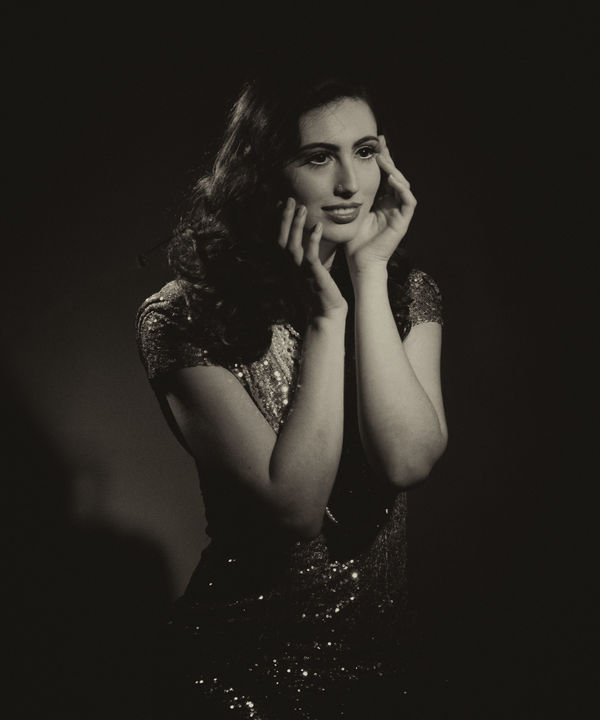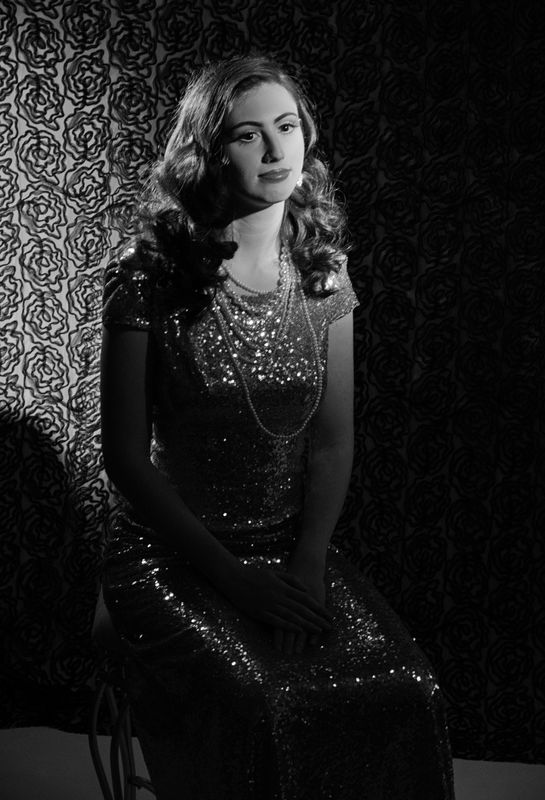Hollywood lighting contrast ratios
Oct 22, 2018 05:11:21 #
Hi all,
On youtube there is a short 10 minute video called "Video Lighting Setup Tutorial" by "pull my focus". I would give a link to it and the accompanying website & tutorial but that would doom this thread to links and resources.
You might think video, I don't do no stinkin video but I think you would be wrong to dismiss these techniques out of hand. I think there will be a number of experienced Professionals on this board who will be delighted to add to this topic. Film and video makers are just like us in many respects but they are usually trying to capture frames at 24.97 frames per second where we are just much slower in our capture rate.
They also have many similar challenges, the dynamic range of a scene is often problematic. If we are exposing for the highlights often that makes our subjects too dark.
You’ve probably heard of these classic lighting styles like the high key lighting of Hollywood musicals and the gritty, contrasty look of film noir.
Let's look at how contrast defines them and some lighting techniques that make up these lighting styles so you can work to create them on your productions.
Contrast Ratio
We have one sun on our planet and therefore a single key light is the norm. It lights the world around us too, our ambient light, and the light reflected off that world falls on our shadow side, our fill light.
Sometimes, light even hits the back of us, creating a back or edge light.
Contrast is the difference in tone, the light level, between these areas: key & fill on the face, backlight on the edge, ambient on the background.
The Contrast Ratio refers to the difference between key and fill on the face. The higher the ratio, the higher the contrast in your image.
If you have an incident light meter, it's fairly easy to measure, but you can do it with a reflective light meter as in your camera. With an incident light meter you block the fill light with your hand to just measure the key light, and block the keylight similarly to measure the fill.
Light can be measured in footcandles. A key light of 100 footcandles and a fill light of 100 footcandles have a 1:1 ratio (a ratio of one to one). A keylight of 800 footcandles and a fill light of 200 footcandles has a ratio of 4:1. Thats a bit foreign to photographers and we are more used to F-stops
The ratio can be determined in relation to F stops since each increase in f-stop is equal to double the amount of light: 2 to the power of the difference in f stops is equal to the first factor in the ratio. For example,
a difference in two f-stops between key and fill is 2 squared, or 4:1 ratio.
A difference in 3 stops is 2 cubed, or an 8:1 ratio.
No difference is equal to 2 to the power of 0, for a 1:1 ratio.
The contrast ratio of the "film noir shot" is 8:1, a 3 stop difference, between key and fill.
"musical high keylighting" is more like 1:1 so very little shadow at all across the subject.
There is a lot more to it than this shallow skim across the subject, i've not addressed the "how" at all. If you want to go beyond found light, or even how to modify found light, this is a topic which can help raise your game and bring your photography to a new level.
On youtube there is a short 10 minute video called "Video Lighting Setup Tutorial" by "pull my focus". I would give a link to it and the accompanying website & tutorial but that would doom this thread to links and resources.
You might think video, I don't do no stinkin video but I think you would be wrong to dismiss these techniques out of hand. I think there will be a number of experienced Professionals on this board who will be delighted to add to this topic. Film and video makers are just like us in many respects but they are usually trying to capture frames at 24.97 frames per second where we are just much slower in our capture rate.
They also have many similar challenges, the dynamic range of a scene is often problematic. If we are exposing for the highlights often that makes our subjects too dark.
You’ve probably heard of these classic lighting styles like the high key lighting of Hollywood musicals and the gritty, contrasty look of film noir.
Let's look at how contrast defines them and some lighting techniques that make up these lighting styles so you can work to create them on your productions.
Contrast Ratio
We have one sun on our planet and therefore a single key light is the norm. It lights the world around us too, our ambient light, and the light reflected off that world falls on our shadow side, our fill light.
Sometimes, light even hits the back of us, creating a back or edge light.
Contrast is the difference in tone, the light level, between these areas: key & fill on the face, backlight on the edge, ambient on the background.
The Contrast Ratio refers to the difference between key and fill on the face. The higher the ratio, the higher the contrast in your image.
If you have an incident light meter, it's fairly easy to measure, but you can do it with a reflective light meter as in your camera. With an incident light meter you block the fill light with your hand to just measure the key light, and block the keylight similarly to measure the fill.
Light can be measured in footcandles. A key light of 100 footcandles and a fill light of 100 footcandles have a 1:1 ratio (a ratio of one to one). A keylight of 800 footcandles and a fill light of 200 footcandles has a ratio of 4:1. Thats a bit foreign to photographers and we are more used to F-stops
The ratio can be determined in relation to F stops since each increase in f-stop is equal to double the amount of light: 2 to the power of the difference in f stops is equal to the first factor in the ratio. For example,
a difference in two f-stops between key and fill is 2 squared, or 4:1 ratio.
A difference in 3 stops is 2 cubed, or an 8:1 ratio.
No difference is equal to 2 to the power of 0, for a 1:1 ratio.
The contrast ratio of the "film noir shot" is 8:1, a 3 stop difference, between key and fill.
"musical high keylighting" is more like 1:1 so very little shadow at all across the subject.
There is a lot more to it than this shallow skim across the subject, i've not addressed the "how" at all. If you want to go beyond found light, or even how to modify found light, this is a topic which can help raise your game and bring your photography to a new level.
Oct 22, 2018 06:13:16 #
That's good information. I went to a photo shoot where the organizer had set up three Arri fresnel lamps to achieve the old Hollywood film noir look. Each photographer set up the lighting to emulate different looks from a book of movie stars from the era. I hadn't done this type of lighting set up before.
Oct 22, 2018 06:39:00 #
blackest wrote:
I would give a link to it and the accompanying website & tutorial but that would doom this thread to links and resources.
Yes, that is a major weakness of this forum. Links are important, but people tend not to look in the Links section. There is a difference between just posting useful links and posting an article which includes a link.
Oct 22, 2018 07:26:07 #
jerryc41 wrote:
Yes, that is a major weakness of this forum. Links are important, but people tend not to look in the Links section. There is a difference between just posting useful links and posting an article which includes a link.
Well here the first video https://www.youtube.com/watch?v=-Fi2i_yjWBM
and the web site link is https://pixelvalleystudio.com/pmf-articles/video-lighting-setup-tutorial
As an extra bonus
https://www.youtube.com/watch?v=gJigNjFTtVo its on hyperfocal distance but really more about keeping two subjects in focus at different distances.
This page goes more into more contrast ratios
http://wanderingdp.com/cinematography/cinematography-school-lighting-ratios-101/
There is so much more than chosing a subject and placing them well it's the light and shadows that gives the wow factor.
Oct 22, 2018 07:50:21 #
The Light meter is the original ratio tool. The incident meter and the spot meter are both great ways of analyzing lighting ratios.
For the Key to Fill light it is a fairly straight forward process to measure the ratio. You take a reading of the key side of your talent in the shot, then you take a reading on the fill side of your shot.
Voila.
You have your key to fill ratio.
To get the Key to Background ratio you can use the incident meter reading of the Key you got when you were measuring the Key to Fill, lets say T4 for this example, and you can spot meter different areas of the background to determine the K:B ratio. If you spot meter the wall behind the subject and it reads T2.8 you know the background wall is one stop under key.
If you spot the window behind the talent and it reads T11 you know the window is 3 stops over key. If that is to high for you and the mood you are going for you know you have to bring that window light down by a certain number of stops
for photographers its F instead of T but principles are the same.
For the Key to Fill light it is a fairly straight forward process to measure the ratio. You take a reading of the key side of your talent in the shot, then you take a reading on the fill side of your shot.
Voila.
You have your key to fill ratio.
To get the Key to Background ratio you can use the incident meter reading of the Key you got when you were measuring the Key to Fill, lets say T4 for this example, and you can spot meter different areas of the background to determine the K:B ratio. If you spot meter the wall behind the subject and it reads T2.8 you know the background wall is one stop under key.
If you spot the window behind the talent and it reads T11 you know the window is 3 stops over key. If that is to high for you and the mood you are going for you know you have to bring that window light down by a certain number of stops
for photographers its F instead of T but principles are the same.
If you want to reply, then register here. Registration is free and your account is created instantly, so you can post right away.





